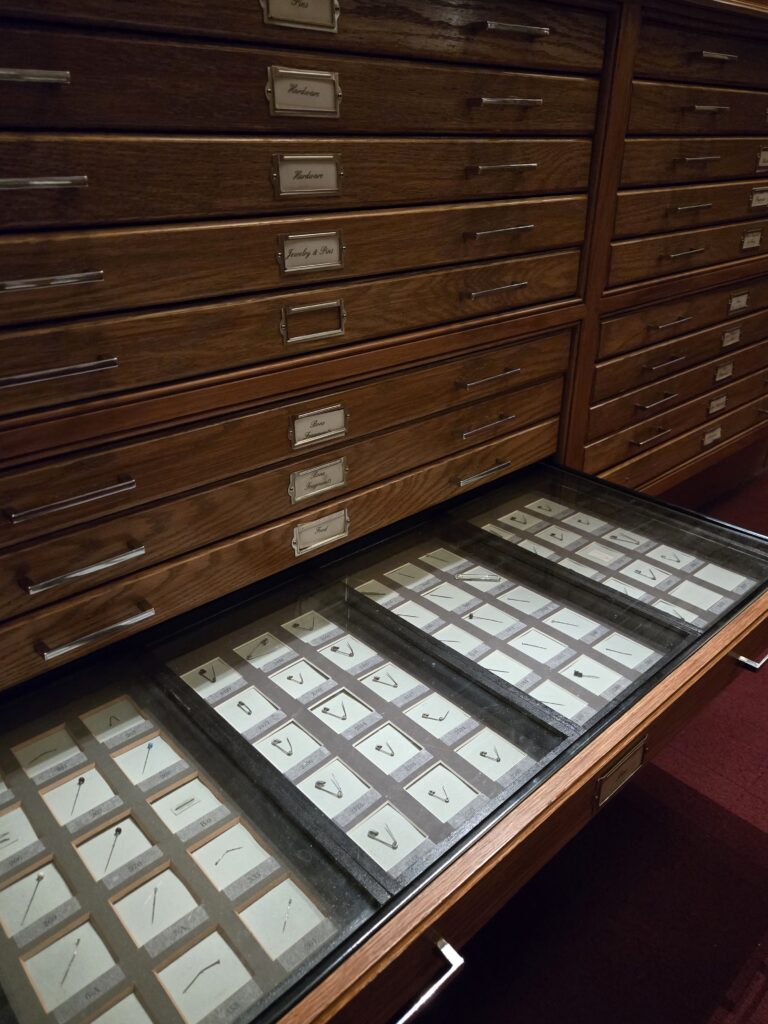Alan Jay Schwartz
Philadelphia, Pennsylvania, United States

Docents guide and educate the visitors at the Mütter Museum of the College of Physicians of Philadelphia while they view the vast array of exhibits. One exhibit in particular is valuable for its historical message. The Chevalier Jackson, MD, (1865–1958) collection displays more than 2,300 foreign objects retrieved by its namesake from the larynx, trachea, or esophagus of patients.1
Jackson’s tale is not new to Hektoen International. J Gordon Frierson, MD, taught us about this role model.2 Thanks to Erikson, Jobe and Ayazi, their current review3 further enlightens us about Jackson’s robust legacy:
He was a champion of social justice, a protector of patients, and an inspiration to medical professionals across the globe.3
Jackson was an otolaryngologist. He invented the esophagoscope and its associated instruments designed to remove foreign bodies from the esophagus and airway. He forged educational and safety protocols necessary for safe endoscopic procedures. He also perfected the bronchoscope, standardized the tracheotomy procedure still employed today, and educated surgeons about endoscopy worldwide.3
From time immemorial, children have swallowed lye or put coins, jacks, marbles, and the like into their mouths, which often become laryngeal or esophageal caustics or foreign bodies. Adults have also been victims, ingesting myriad items such as fish bones, carpenter’s nails, safety pins, and teeth. As lye ingestion by unsuspecting children was a major public health hazard in Jackson’s era, he endoscopically diagnosed its caustic ravages, esophagitis, and esophageal stricture, relieving affected patients by dilating the scarred, narrowed esophagus.
Observing the harmful effects of caustic substances and realizing prevention was a necessary remedy, Jackson became a staunch advocate for product safety labeling.3 The Federal Caustic Poison Act4 was signed into US law in 1929 by President Calvin Coolidge, who bestowed presidential thanks to Jackson for faithfully championing this public health initiative.3 This Act, designed to safeguard, journeyed a long time before coming into being.
The history of consumer protection against household poisons presents a key case study of the uniquely American struggle to balance public health and safety with the interests of business.5
This struggle was true in the early 1900s and continues to be so today, vividly displayed by the Jackson Collection. When modern-day children wolf down button batteries from toys and hearing aids like they do coins, jacks, marbles, and other small objects, such batteries pose a unique risk beyond solely becoming lodged in the esophagus. The electric current of the battery is sustained in the electrolytic fluids of the esophagus. Corrosive attrition of the esophageal lining may occur. If allowed enough time, which is often too short indeed, erosion of the aorta, lying in close proximity to the esophagus, can cause massive, life-threatening hemorrhage.
What would Chevalier Jackson have recommended to circumvent the modern-day double barrel peril associated with button batteries? Not only would he have extracted the batteries from their location, but he would also have recommended prevention or mitigation of their caustic threat. As with lye, securing labeling to warn consumers has not been easy. In 1982, the National Battery Ingestion Hotline (NBIH) was formed through the National Capital Poison Center (NCPC).6,7 It has taken years for NBIH and NCPC data to assist in the development of prevention and mitigation strategies that Jackson undoubtedly would have advocated. The US Consumer Product Safety Commission in 2011 and the Centers for Disease Control in 2012 entered the fray with companion organizations including the American Academy of Pediatrics and the American Broncho‐Esophagological Association.6,7 A “Poison Control Button Battery Ingestion Triage and Treatment Guideline”8 now exists to guide care and mitigation of the public health hazard.
What else does Jackson offer us as a modern-day public service message? When faced with the problem of foreign body ingestion and its associated morbidity, he devised treatments that included his newly invented endoscopy tools and, even better, advocated for public awareness to prevent medical consequences. The modern approach to the sometimes lethal scourge of button batteries mimics Jackson’s style. As museum visitors view and learn from Chevalier Jackson’s collection, they can be cajoled to acute caution regarding button batteries and pass it on to those they know—an awareness that can save a child.
References
- “Chevalier Jackson Collection.” The College of Physicians of Philadelphia Mütter Museum Historical Medical Library. Accessed December 1, 2024. https://muttermuseum.org/on-view/chevalier-jackson-collection
- Frierson JG. “America’s first bronchoscopist.” Hektoen International Summer 2022. Accessed December 1, 2024. https://hekint.org/2022/07/11/americas-first-bronchoscopist/
- Erikson SE, Jobe BA, Ayazi S. “Chevalier Jackson: father of endoscopic surgery, and champion of women in medicine, social justice, and public health.” Surg Endosc. 2023 Jul 13;37(9):6660-71. doi: 10.1007/s00464-023-10256-x
- Federal Caustic Poison Act, 15 U.S.C. ch. 11 §§401-411 (1934). Accessed December 1, 2024. https://www.loc.gov/item/uscode1934-001015011/
- Jones MM, Benrubi ID. “Poison Politics: A Contentious History of Consumer Protection Against Dangerous Household Chemicals in the United States.” Am J Public Health May 2013;103(5):801-12. doi: 10.2105/AJPH.2012.301066
- Anfang AA, Jatana KR, Linn RL, Rhoades K, Fry J, Jacobs IN. “pH-neutralizing esophageal irrigations as a novel mitigation strategy for button battery injury.” Laryngoscope 2019;129(1):49-57.
- Sethia R, Gibbs H, Jacobs IN, Reilly JS, Rhoades K, Jatana KR. “Current management of button battery injuries.” Laryngoscope Investigative Otolaryngology. 2021;6:549-63.
- “Poison Control Button Battery Ingestion Triage and Treatment Guideline.” National Capital Poison Center, June 2018. Accessed December 1, 2024. https://www.poison.org/battery/guideline
ALAN JAY SCHWARTZ, MD, MSEd, received his BA and MD from Temple University and his MSEd from the University of Pennsylvania. He practiced cardiac and pediatric anesthesiology at the University of Pennsylvania and Children’s Hospital of Philadelphia (CHOP) where he was the Pediatric Anesthesia Fellowship Director. He recently authored a history of Thomas Dent Mütter, MD, surgeon, educator and champion of anesthesia and surgical asepsis.

Leave a Reply